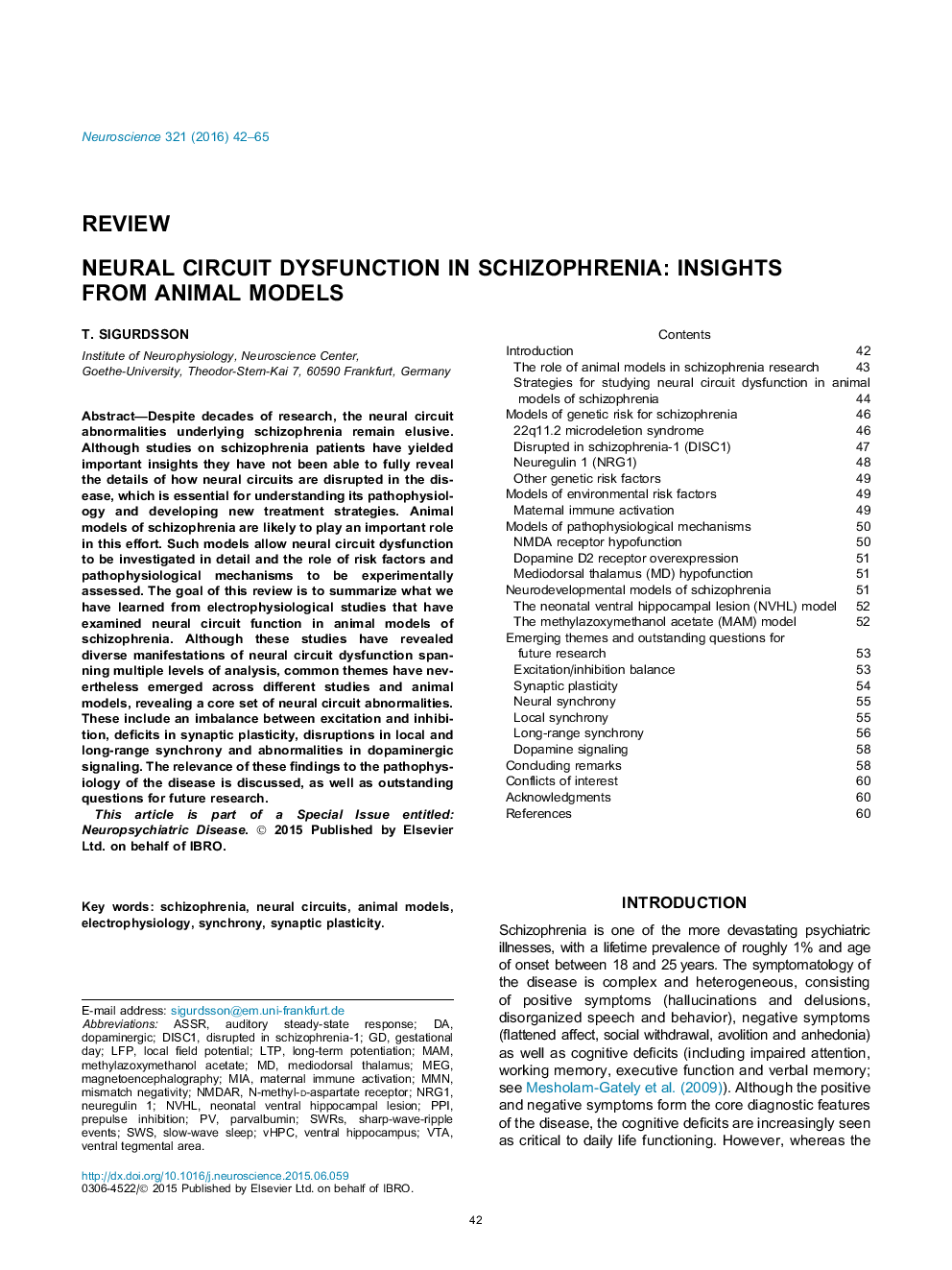| Article ID | Journal | Published Year | Pages | File Type |
|---|---|---|---|---|
| 6271153 | Neuroscience | 2016 | 24 Pages |
â¢The neural circuit abnormalities underlying schizophrenia remain incompletely understood.â¢Animal models can help reveal neural circuit dysfunction in greater detail than in patient studies.â¢These models display abnormalities in excitation/inhibition balance and neural synchrony.â¢Abnormalities in dopamine transmission and synaptic plasticity are also observed.
Despite decades of research, the neural circuit abnormalities underlying schizophrenia remain elusive. Although studies on schizophrenia patients have yielded important insights they have not been able to fully reveal the details of how neural circuits are disrupted in the disease, which is essential for understanding its pathophysiology and developing new treatment strategies. Animal models of schizophrenia are likely to play an important role in this effort. Such models allow neural circuit dysfunction to be investigated in detail and the role of risk factors and pathophysiological mechanisms to be experimentally assessed. The goal of this review is to summarize what we have learned from electrophysiological studies that have examined neural circuit function in animal models of schizophrenia. Although these studies have revealed diverse manifestations of neural circuit dysfunction spanning multiple levels of analysis, common themes have nevertheless emerged across different studies and animal models, revealing a core set of neural circuit abnormalities. These include an imbalance between excitation and inhibition, deficits in synaptic plasticity, disruptions in local and long-range synchrony and abnormalities in dopaminergic signaling. The relevance of these findings to the pathophysiology of the disease is discussed, as well as outstanding questions for future research.
